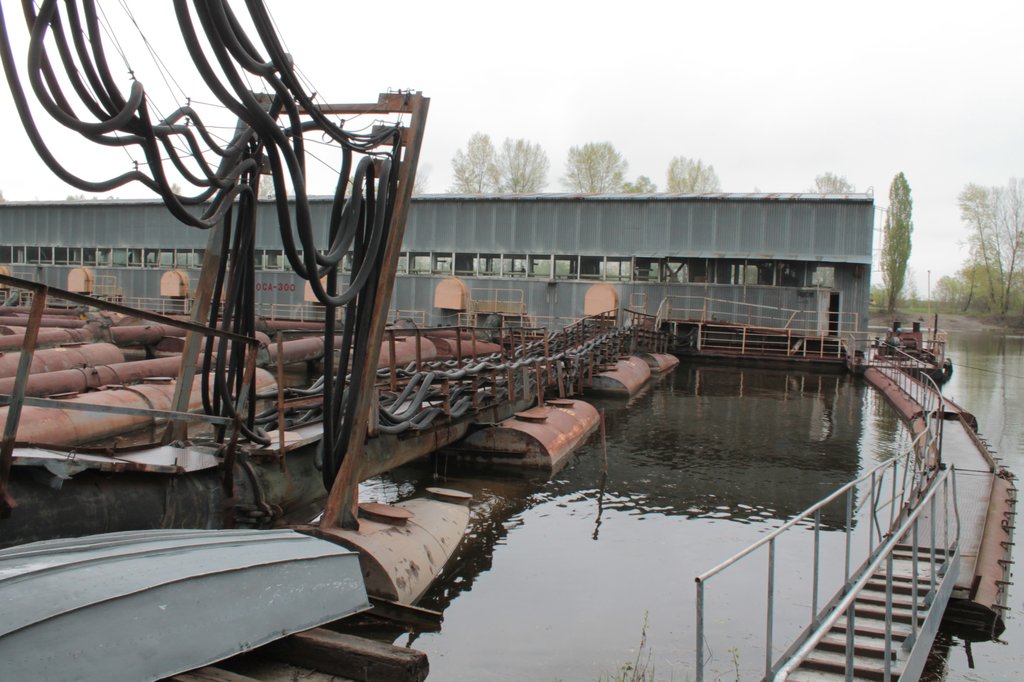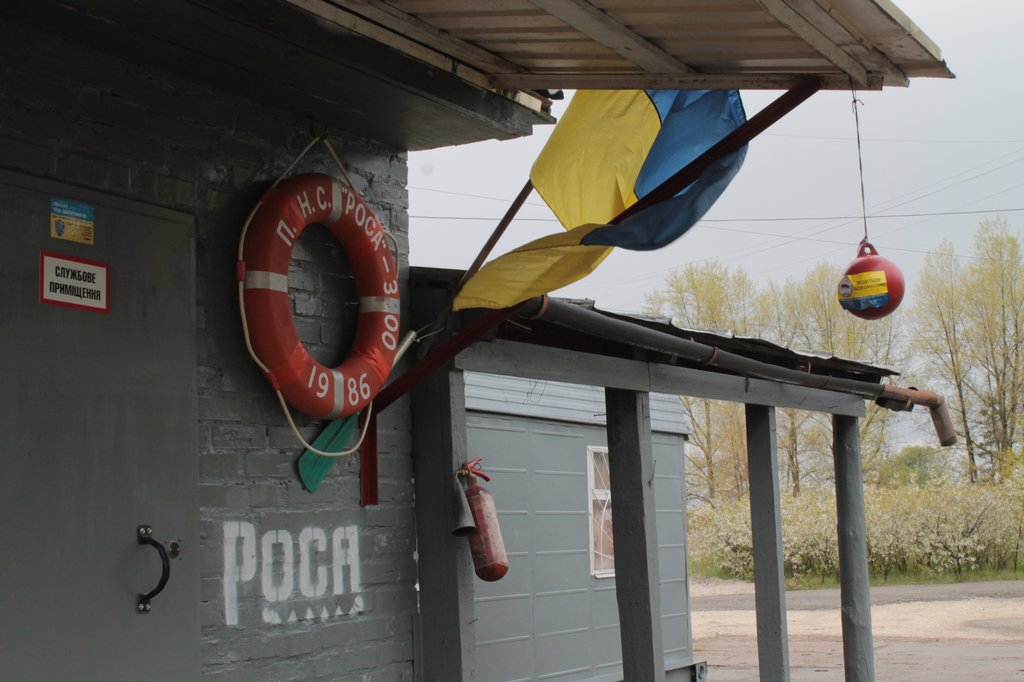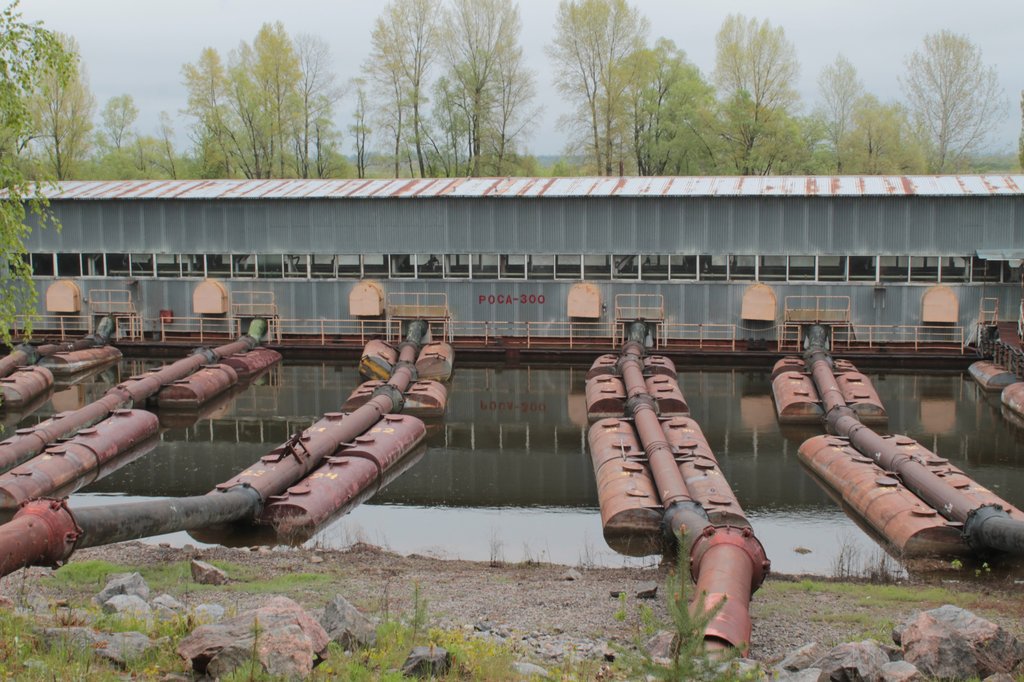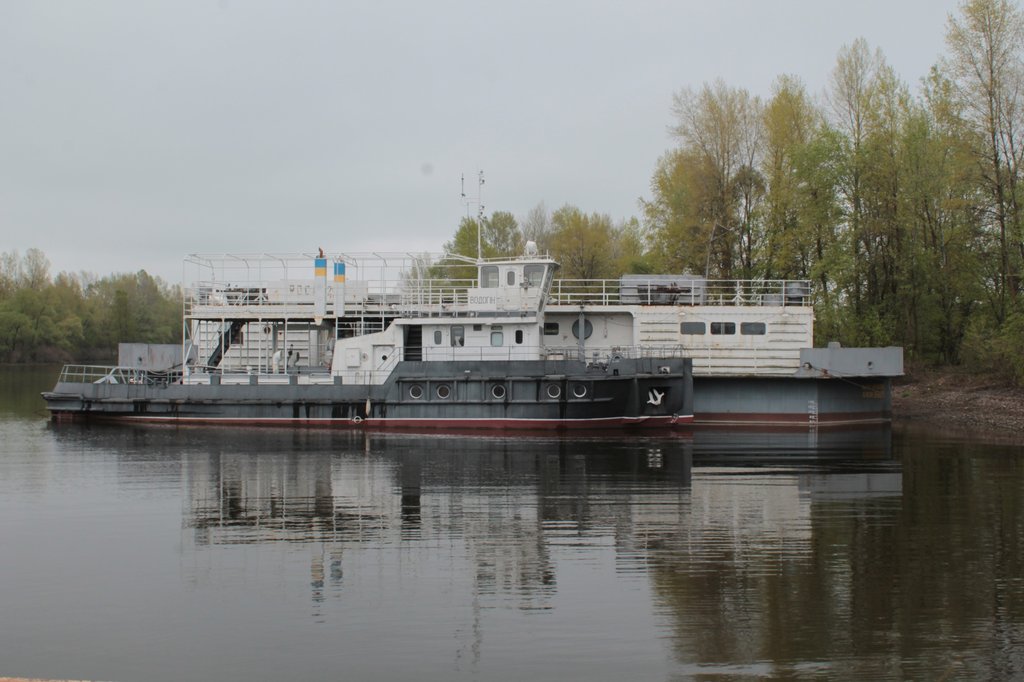On April 26, 1986, the largest man-made disaster in human history occurred at the Chernobyl nuclear power plant. The explosion of the reactor at the fourth power unit led to human casualties and radiation pollution of air, soil, ground and river waters. The issue of clean water for Kyiv in those days became very acute, because water supply was needed not only for the population and industry, but also for watering roads, sidewalks and green areas. It became impossible to use Dnieper water due to radioactive contamination.
To save the city, Kievvodokanal specialists proposed an unprecedented technical solution – to lay a water supply system from the Desna River to the Dnieper water intake. The Kiev City Executive Committee quickly approved this decision and on June 21, 1986, new water supply facilities with a capacity of 350,000 cubic meters per day were launched. Water intake from the Dnieper was stopped, and with the help of the newly built floating pumping station “Rosa-300” and two water pipelines with a diameter of 900 and 1400 millimeters, water from the Desna River was supplied to the Dnieper water station. Thus, uninterrupted centralized water supply to the capital was carried out in full from the Desna and unpolluted underground sources.
At the end of 1986, due to the stabilization of radioactive contamination of the Dnieper water within the current standards, the work of the Rosa-300 floating pumping station was stopped. In total, during the period from 1986 to 2016, the station was operated for 17 months in the mode of one to four pumping units operating simultaneously in different periods: in 1986 from June to December; in 1987 from April 15 to 25; in 1991 from February 7 to May 25; in 1999 from January 16 to June 29.
The last time the Rosa-300 floating pumping station was used was in 2010 from March 16 to April 16, when a critical decrease in oxygen levels under the ice in the Kiev Reservoir provoked a massive death of fish and water pollution.
The water intake complex can still be used to draw water from the Desna River. During the cold season, the station is in a mothballed state. And in the spring, on the eve of the flood, the Rosa-300 is checked and prepared for work in case of emergency situations on the Dnieper. Now the station is in need of a major overhaul, which has been carried out only once since 1986, in 1999. To carry out the work, it is necessary to tow the Rosa to the shipyard, but without clearing the underwater channel of sand and alluvial soil (10-12,000 cubic meters of soil), this cannot be done. The total estimated cost of cleaning and major repairs of the station is more than 5,000,000 hryvnia.
Where is the Rosa-300 pumping station?
Oseshchina, Kiev region, coordinates 50.561142, 30.549806





